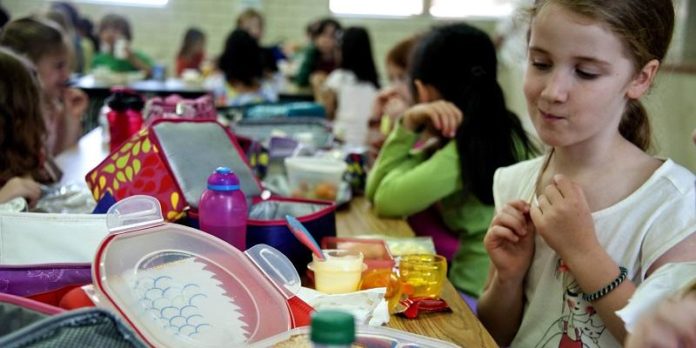Fewer than two in every 100 packed lunches eaten by children in English primary schools meet nutritional standards, according to a major survey.
Although the amount of sugary food in lunchboxes declined over ten years it is still higher than recommended, and there has been a drop in essential vitamins and minerals. The University of Leeds researchers say the lack of fresh food is to blame.
With just one in five children having any vegetables or salad in their packed lunch, the researchers argue that the Government should consider making fresh vegetables freely available in schools.
They are also calling on the food industry to look at ways of making it easier for parents and carers to select healthier food options for their children.
Listen to Dr Charlotte Evans, an expert in diet and health, describe how children can be encouraged to eat fresh vegetables.
The research compared the nutritional quality of packed lunches brought into a sample of primary schools in 2006 and then in 2016. Their results, showing how the nutritional quality of lunchboxes has changed over ten years, is published today in BMJ Open.
It has been estimated that more than half of primary school children take a packed lunch to school.
The researchers investigated whether packed lunches met the food standards that apply to cooked meals in England’s schools.
Since 2006, eight standards have been introduced for cooked school lunches. Confectionery, savoury snacks and sweetened drinks are restricted while vegetables, protein and dairy have to be included in each meal.
Packed lunches, however, are not subject to any control.
The researchers found that the percentage of packed lunches meeting all eight food standards was very small, increasing slightly from 1.1% in 2006 to 1.6% over ten years.
Dr Charlotte Evans, an expert in diet and health and Associate Professor in the School of Food Science and Nutrition at Leeds, led the research.
She said: “This study underlines the role that parents, carers, the Government and the food industry have in ensuring children eat more healthily.
“In 2015, figures indicated that around one third of British 10-year-olds were obese – that is linked to what they are eating.
“The research has found that on some fronts, packed lunches have improved but they are still dominated by sweet and savoury snack food and sugary drinks. The vast majority provide poor nutritional quality. Addressing that issue over the next ten years will require a concerted effort.
“Improving what children eat at school will help reduce the risk of childhood obesity.”







